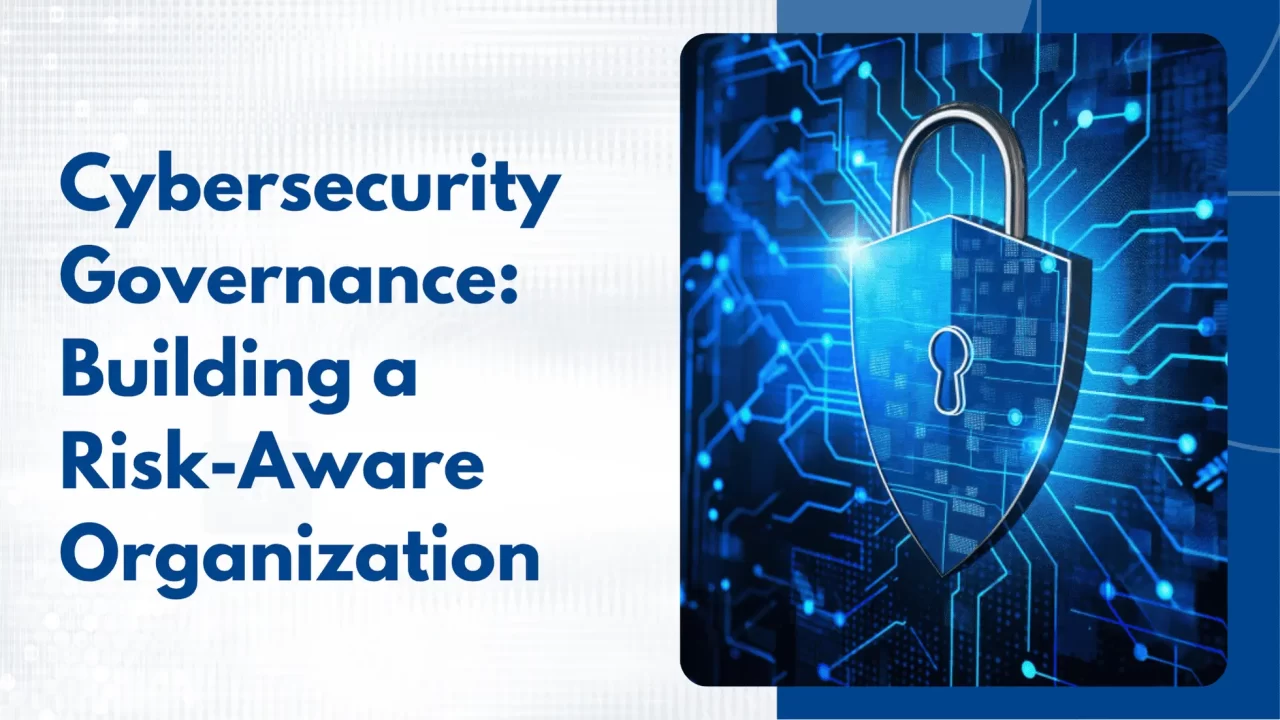Cybersecurity is no longer just a technical responsibility of the IT department; it is a critical component of enterprise risk management. As cyber threats evolve in complexity and frequency, organizations must shift from a reactive stance to a proactive, governance-led approach. This involves embedding cybersecurity into the broader governance, risk, and compliance (GRC) framework, where executive leadership plays a pivotal role in managing digital risk.
In this blog, we explore what cybersecurity governance is, why it matters, and how businesses can build a risk-aware culture that prioritizes security at every level of the organization.
What is Cybersecurity Governance?
Cybersecurity governance refers to the policies, procedures, and oversight mechanisms that guide an organization’s approach to managing cyber risks. It encompasses strategic alignment between cybersecurity efforts and business objectives, defined accountability structures, and continuous monitoring of risk exposure.
Unlike operational security practices (e.g., patch management or threat detection), governance is about decision-making, policy development, and setting the tone from the top.
Key Components of Cybersecurity Governance:
- Leadership Involvement: Board and C-level engagement in defining and reviewing cyber risk priorities.
- Policy Frameworks: Comprehensive and updated policies covering acceptable use, incident response, data protection, and more.
- Roles and Responsibilities: Clearly defined responsibilities across IT, security, compliance, and business units.
- Risk Assessment and Reporting: Ongoing evaluation of threat landscape, vulnerabilities, and regulatory obligations.
- Compliance and Audit Readiness: Alignment with global standards like ISO 27001, NIST, GDPR, and others.
Why Cybersecurity Governance Matters
- Strategic Risk Management
Cyber incidents have business-wide implications. Without governance, cybersecurity efforts can become siloed, leaving critical risks unaddressed. Governance ensures a structured approach to evaluating, prioritizing, and mitigating cyber risks in alignment with business strategy.
- Accountability and Ownership
Effective governance creates clear ownership of cyber risk. When roles and responsibilities are formalized, accountability extends beyond the IT department to legal, HR, operations, and leadership teams.
- Regulatory Compliance
Organizations face increasing scrutiny from regulators and industry bodies. Strong governance ensures that policies and procedures are in place to meet compliance requirements and reduce the risk of fines, investigations, or license revocations.
- Stakeholder Confidence
From investors to customers, stakeholders expect businesses to protect data and ensure operational resilience. A visible cybersecurity governance program demonstrates commitment and builds trust.
- Incident Response Readiness
Governance provides the foundation for structured incident response planning. With formal processes and reporting channels in place, organizations can react swiftly and efficiently to security incidents.
How to Build a Risk-Aware Organization through Cybersecurity Governance
- Secure Executive Buy-In
Cybersecurity must be on the boardroom agenda. CIOs and CISOs should regularly brief executives on cyber risks, threat trends, and security investments. Establishing a cybersecurity steering committee with cross-functional representation is also recommended.
- Develop a Governance Framework
Adopt a recognized cybersecurity governance framework (such as ISO 27001, NIST Cybersecurity Framework, or COBIT). Tailor it to your organization’s size, industry, and regulatory environment.
- Define Roles and Reporting Structures
Create a RACI (Responsible, Accountable, Consulted, Informed) matrix to clarify who does what in cybersecurity. Align reporting structures to ensure issues can be escalated quickly and transparently.
- Conduct Regular Risk Assessments
Implement risk assessment processes that identify and quantify cybersecurity risks. Link risk metrics to business impact (e.g., financial loss, downtime, reputational damage) to gain executive attention and justify investments.
- Build Policies that Reflect Real-World Use Cases
Move beyond generic templates. Customize policies to fit real business scenarios such as remote work, third-party access, or BYOD. Ensure policies are accessible and understandable.
- Train Employees on Cyber Risk Awareness
Develop an organization-wide security awareness program that addresses phishing, social engineering, data handling, and reporting procedures. Reinforce the idea that every employee plays a role in cybersecurity.
- Measure and Report on Governance Effectiveness
Use KPIs and metrics (e.g., policy adherence rates, incident response times, audit findings) to track progress. Present this data to leadership to foster accountability and drive continuous improvement.
- Align Governance with Business Continuity Planning
Cybersecurity governance should feed into broader business continuity and disaster recovery efforts. Ensure alignment on roles, escalation protocols, and communication plans in the event of a cyber incident.
Best Practices and Industry Standards
- ISO/IEC 27001: Provides a systematic approach to managing sensitive company information and includes a risk-based methodology.
- NIST Cybersecurity Framework: Offers guidelines for improving critical infrastructure cybersecurity.
- COBIT: Focuses on governance and management of enterprise IT, bridging the gap between business and technology.
Incorporating these standards helps businesses benchmark their governance model and achieve audit-readiness.
Conclusion
In 2025 and beyond, cybersecurity governance will play a central role in building resilient, risk-aware organizations. By embedding security into corporate governance structures and empowering leadership to take ownership of digital risk, businesses can move from reactive protection to proactive prevention.
Governance is not about perfection—it’s about visibility, accountability, and continuous improvement. The sooner organizations embrace this mindset, the better equipped they will be to face the challenges of today’s cyber threat landscape.
Want to explore how your organization can build a governance-first security model? Schedule a one-on-one session with our experts and discover the right cybersecurity strategy tailored to your business.



